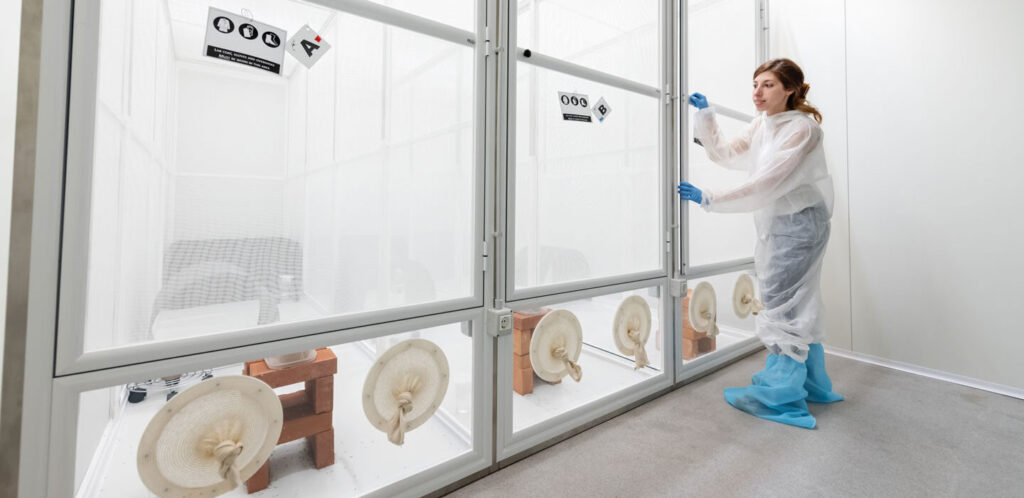Tokyo, 4 June, /AJMEDIA/
The weapon, a self-replicating bit of DNA known as a gene drive, is one of the most anticipated and controversial tools being developed to stop mosquitoes from spreading diseases like malaria to humans.
The gene drive interferes with the insects’ ability to reproduce. It wiped out captive populations of mosquitoes in eight to 12 generations (SN: 10/27/18, p. 6) in a small lab study. In 2021, the technology worked in the large cages in Terni, Italy, too. Within as little as five to 10 years, this gene drive could be ready to test in the wild.
The first experimental release could be rolled out in Burkina Faso, Mali, Ghana or Uganda. In those locations, researchers are working with a nonprofit research consortium called Target Malaria to develop the gene drive carriers along with other genetically engineered mosquitoes to fight malaria.
This research is driven by the idea that every tool available must be used to fight malaria, which sickened close to 241 million people in 2020 and killed 670,000 worldwide, mostly in Africa. Children 5 years old and younger accounted for about 80 percent of the continent’s malaria deaths, the World Health Organization says.
Because of malaria’s huge toll, large investments have been made to fight the disease, yielding preventive drugs, insecticide-treated bed nets and even malaria vaccines — one was recently recommended for use in sub-Saharan Africa (SN: 12/18/21 & 1/1/22, p. 32). These efforts are helping. But mosquitoes are developing resistance to insecticides, and some anti-malaria drugs may no longer work well.
“To go toward zero [cases], we need to have something that is transformational,” says Fredros Okumu, a mosquito biologist and director of science at Ifakara Health Institute in Tanzania.
Gene drives might be the transformational answer people are looking for. Researchers are still refining and testing the technology, which was first devised in 2015 (SN: 12/12/15, p. 16). Though other types of genetically altered mosquitoes have been released in Brazil, the United States and elsewhere, those altered genes spread slowly among wild populations (SN Online: 3/9/22). Gene drives could potentially spread to nearly ever member of a species quickly, forever altering the species or wiping it out.
But whether gene drives ever play a role in combating malaria may depend as much on social considerations as on science.
“A technology doesn’t work by technical strength alone. It works because it embeds into a social context,” says Ramya Rajagopalan, a social scientist at the University of California, San Diego. In the past, scientists “developed a technology in the lab, got it all set up and ready to go, and then you go to the stakeholders and say, ‘Hey, we have this great technology, do you want to use it?’ ”
If people reject that sort of offer, as has happened with some genetically modified crops, researchers often think, “If [the public] only knew enough about the technology, they’d be more accepting,” Rajagopalan says. But more often the failure comes because the researchers “don’t include community voices from the outset in the design and the implementation.”
Because of the possibility of forever altering ecosystems, the European Union has already said “no” to using gene drives there. But Africa is where a gene drive might one day help defeat malaria. Researchers are hoping to eventually release gene drives on the continent, but must first get public consensus. To that end, scientists are looking for ways to involve members of the public in research, and learn about local priorities and how to talk about the technology.
Rattling the cage
No one is ready to let mosquitoes carrying gene drives out of the lab yet. For now, researchers are doing tests with mosquitoes in captivity to get an idea of whether the technology will work as planned. In the Terni cage trials, scientists used small rooms, setting humidity levels, lighting and other characteristics to mimic some of the conditions the mosquitoes might encounter in the wild.
In cages almost 5 cubic meters big — about the size of a small dressing room — containing hundreds of Anopheles gambiae mosquitoes, scientists added male members of the same species that carried the engineered change to their DNA.
The gene drive used for this experiment is built on the molecular scissors known as CRISPR/Cas9. Male mosquitoes are engineered to carry the gene drive, which consists of instructions for making the DNA-cutting enzyme Cas9 and an RNA that guides the enzyme to the gene to be cut. When an engineered male mates with an unaltered female, Cas9 snips a gene called doublesex inside the fertilized egg. As the egg tries to repair the cut, the gene drive from the father’s doublesex gene is pasted over the copy of the gene inherited from the mother. So the offspring gets two copies of the gene drive, instead of one.
Normally, any particular version of a gene has a 50 percent chance of being passed from parent to offspring. But with the copy-and-paste CRISPR system, gene drive–carrying mosquitoes pass the drive to about 96 percent of male progeny and more than 99 percent of females. With that genetic cheat, the gene drive spreads rapidly through the population.

